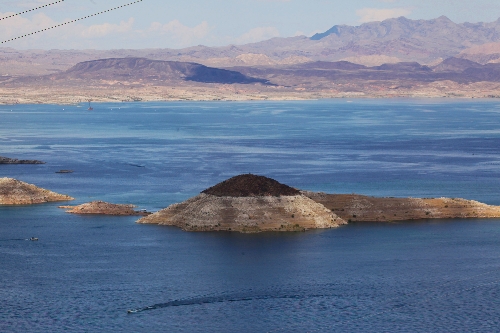Bass magazine recognizes Lakes Mead, Mohave

Lakes Mead and Mohave have long been included on the list of stops for professional bass fishing circuits, but they haven’t always been recognized for their contributions to the fishing sports. That all changed, however, when Bassmaster magazine included the two reservoirs on its recently released list of “100 Best Bass Fishing Lakes in the U.S.”
Lake Mead is listed at No. 38 and Lake Mohave comes in at No. 97. Not bad for lakes located in the nation’s driest county, but I’m sure there are some local anglers who think Lake Mohave should be further up the list.
The final list is the result of a multifaceted process that included information from state fishery agencies, nominations from B.A.S.S. Federation Nation tournament organizers and input from a panel of professional anglers, fishing writers and others. Topping the list is Falcon Lake, an 83,000-acre impoundment that straddles the Texas-Mexico border. It is famous for giving up limits of large fish and infamous for its drug cartel-related crime.
Second on the list is Florida’s Lake Okeechobee and third is Lake Guntersville in Alabama. Other lakes that made the list that are located within easy driving distance of Las Vegas include Utah’s Lake Powell (59), and Arizona’s Roosevelt Lake (24), Lake Havasu (33), Apache Lake (58), and Lake Pleasant (70).
The idea for the list, according to Bassmaster editor James Hall, came about during a spirited discussion among outdoor writers with definite opinions about the nation’s top bass waters. Hall decided to pursue the idea but wanted to base the results on science. Plans call for the list to appear annually. Full details about the lakes included on the list can be found at bassmaster.com/news.
■ CORRECTING THE NUMBERS – Though I was listening to a voice message, the man’s concern was easily detectable. He had called in reference to my May 3 column about the increases in big game tags recommended by the Nevada Department of Wildlife for 2012 and to be considered this weekend by the State Board of Wildlife Commissioners when it meets in Reno.
The caller didn’t seem concerned about the number of tags that would be available overall, but he was definitely disturbed by what he thought was an excessive number of deer tags that would be allotted to nonresident hunters. I couldn’t remember writing anything that indicated nonresidents would get anything more than their usual 10 percent cut of the tag pie, but something had the reader concerned enough to call. So I pulled up the online version of my column and there it was – the source of my caller’s ire.
It was a sentence that read “NDOW is proposing a 54 percent increase – to 21,118 for resident hunters and 13,679 for nonresident hunters – in deer tag numbers over those it recommended one year ago.” That was incorrect. Actually, the number 13,679 refers to the number of resident deer tags the NDOW biologists recommended in 2011 and has nothing to do with the number of nonresident deer tags proposed for 2012.
In actuality, the number of nonresident deer tags recommended by biologists for the 2012 hunting seasons is only 2,037. With this in mind, the sentence in question should have read as follows: “NDOW is proposing a 54 percent increase – to 21,118 for resident hunters and 2,037 for nonresident hunters.”
With that settled, it still looks like this could be a good year of opportunity for hunters who have been waiting on the sidelines.
Freelance writer Doug Nielsen is a conservation educator for the Nevada Department of Wildlife. His “In the Outdoors” column, published Thursday in the Las Vegas Review-Journal, is not affiliated with or endorsed by the NDOW. Any opinions he states in his column are his own. He can be reached at intheoutdoorslv@gmail.com.












